Groq has firmly established itself as the global leader in AI inference speed, consistently setting new benchmarks for performance, efficiency, and real-time responsiveness. Its cutting-edge architecture is rapidly becoming the foundation for next-generation AI applications.
Just two days ago, Groq made headlines with the launch of Kimi K2, its most advanced large language model to date. Now officially hosted on the Groq platform, Kimi K2 is already gaining momentum across the AI development community for its blazing-fast response times and high scalability.
In a major boost to its growth trajectory, Groq secured $1.5 billion in funding at Saudi Arabia’s LEAP 2025 event. This strategic investment not only reinforces Groq’s global credibility but also empowers the company to scale its infrastructure and accelerate the delivery of high-performance AI solutions worldwide.
Performance
Groq’s infrastructure delivers a staggering 185 tokens per second in official inference speed, far outpacing traditional platforms. This level of throughput enables real-time AI interactions at scale, making Groq the platform of choice for developers seeking ultra-fast, production-ready deployments.
July 2025 Latest Updates
- Kimi K2 Launch on Groq Platform
The recently launched Kimi K2 language model is now officially hosted on the Groq platform. This development is generating strong interest among AI developers and enterprise users due to its exceptional speed and scalability. - $1.5 Billion Investment from Saudi Arabia
At the LEAP 2025 technology summit, Groq secured a strategic investment of $1.5 billion from Saudi Arabia. This funding marks a major milestone in Groq’s global expansion and its mission to deliver high-performance AI infrastructure at scale. - Bell Canada Partnership for AI Infrastructure
Groq has announced a significant partnership with Bell Canada to support the deployment of national-level AI infrastructure. The collaboration aims to deliver low-latency, high-efficiency AI services across the Canadian market. - Addition of Llama 3.3 70B and Llama 3.1 8B Models
Groq has expanded its model offerings with the integration of Llama 3.3 70B and Llama 3.1 8B. This update strengthens the platform’s support for cutting-edge open-source models and enhances flexibility for AI developers.
Kimi K2: The Game Changer
Technical Specifications
Activated Parameters
Kimi K2 operates with 32 billion activated parameters, enabling efficient real-time reasoning while optimizing compute resources through its dynamic model routing.
Total Model Size
The model architecture includes 1 trillion total parameters, placing it among the most expansive large language models available, designed for advanced understanding and generation across diverse tasks.
Context Window
Kimi K2 supports a 128,000-token context length, allowing it to process and retain significantly more information than traditional models — ideal for handling long documents, in-depth conversations, and complex prompts.
Tool Use Capabilities
The model is engineered for advanced tool use, enabling it to interact seamlessly with external systems, perform structured reasoning, and support complex workflows in multi-agent environments.
Model Architecture
Built on a Mixture-of-Experts (MoE) framework, Kimi K2 activates only a subset of its parameters per inference. This architecture allows for high performance and efficiency at scale, balancing power and cost in large-scale deployments.
Performance Benchmarks
Leading Open-Source Agentic Model
Kimi K2 is currently recognized as the most powerful open-source agentic model available, combining advanced reasoning capabilities with open accessibility for developers and researchers.
SWE-bench Performance
On the SWE-bench benchmark, Kimi K2 achieved a 65.8% pass@1 score on verified tests. This result places it among the top-tier models for software engineering tasks, code generation, and bug resolution.
Cost-Effective Claude 4 Sonnet-Level Performance
Kimi K2 delivers performance comparable to Claude 4 Sonnet, but at approximately one-third the operational cost. This cost-performance advantage makes it a compelling alternative for large-scale deployments requiring high throughput.
Inference Speed
Hosted on the Groq platform, Kimi K2 maintains an average inference speed of 185 tokens per second, with burst speeds reaching up to 220 tokens per second. This performance enables real-time interaction and supports latency-sensitive enterprise use cases.
Real-world Applications
Advanced Coding Assistance
Kimi K2 excels in code generation, debugging, and software design, making it a powerful tool for developers. Its high pass rates on technical benchmarks demonstrate its reliability in real-world programming environments.
Mathematical Problem Solving
The model is capable of handling a wide range of mathematical tasks — from basic arithmetic to advanced symbolic computation — with precision and logical clarity, making it valuable for research, education, and scientific workflows.
Complex Reasoning Tasks
Built on a Mixture-of-Experts framework, Kimi K2 is optimized for structured reasoning. It can analyze nuanced scenarios, draw logical inferences, and generate multi-perspective outputs across legal, financial, and academic domains.
Multi-step Workflow Automation
With its ability to understand context over long sequences and interact with tools, Kimi K2 is well-suited for automating multi-step workflows in fields like data analysis, content generation, customer support, and enterprise operations.
Business & Financial Developments
Major Funding & Partnerships
$1.5 Billion Commitment from Saudi Arabia
Groq secured a major financial boost with a $1.5 billion investment commitment from the Kingdom of Saudi Arabia, announced during the LEAP 2025 summit. This strategic funding is aimed at accelerating Groq’s infrastructure development and global reach.
Strategic Partnership with Bell Canada
In a move to expand its presence in North America, Groq entered into a strategic partnership with Bell Canada. The collaboration focuses on deploying national-level AI infrastructure to support real-time AI services across telecommunications, government, and enterprise sectors.
Global Infrastructure Expansion
Groq is actively scaling its high-performance compute infrastructure across international markets. These expansion efforts are designed to meet rising demand for ultra-low latency inference capabilities in industries ranging from finance to healthcare.
Enterprise Client Acquisition
With growing recognition of its performance and cost-efficiency advantages, Groq is rapidly expanding its enterprise client base. The company is onboarding organizations seeking scalable, real-time AI platforms to power mission-critical applications.
Market Valuation & Growth
Company Valuation Trajectory
Groq’s valuation has seen a sharp upward trajectory, driven by major funding rounds, strategic partnerships, and its reputation as a leader in high-speed AI inference. The recent $1.5 billion investment has significantly enhanced investor confidence and positioned the company for further institutional backing.
Revenue Growth Patterns
With growing adoption of its inference infrastructure by enterprise clients, Groq is experiencing strong year-over-year revenue growth. The monetization of hosted LLMs, along with toolchain integrations, is contributing to a diversified and scalable revenue model.
Market Share Expansion
Groq is steadily capturing market share in the AI infrastructure sector, especially in domains requiring real-time performance, such as finance, telecommunications, and large-scale enterprise applications. Its platform is increasingly being selected over traditional GPU-based solutions due to its superior throughput and efficiency.
Competitive Positioning
Through its unique architectural approach and cost-effective performance, Groq has carved out a distinct competitive edge. It now stands alongside — and in some metrics ahead of — major players like Nvidia, Google Cloud, and AWS in the inference delivery space, particularly for latency-sensitive use cases.
Investment Implications
Interest in Pre-IPO Stock
Groq remains a private company, not yet listed on public exchanges. Accredited investors may gain exposure via secondary marketplaces like Forge, EquityZen, or UpMarket. For instance, Groq’s Series D round in August 2024 valued the company at $2.8 billion, with secondary trades reportedly reaching around $4 billion as of mid‑2025 Forge+3Access IPOs+3Forge+3.
Future IPO Possibilities
Though Groq has not indicated any definitive IPO timeline, analysts expect a public offering in late 2025 or 2026, contingent on revenue growth and market conditions Access IPOs+1StockAnalysis+1. Insider sources also suggest the company is engaging investors for a Series E round of $300–500 million at a $6 billion post-money valuation, likely to finance its Saudi infrastructure plans Investing.com.
Market Disruption Potential
Groq’s specialized Language Processing Units (LPUs) differentiate it sharply from GPU-centric competitors. It claims 10× better energy efficiency per token than Nvidia’s A100, while maintaining sub-millisecond inference latency Business Insider+6AInvest+6Tom’s Hardware+6. As sectors like finance, telecommunications, and sovereign cloud emphasize inference speed and cost, Groq’s architectural advantage positions it as a disruptive force Groq+2Business Insider+2AInvest+2.
Long-Term Growth Outlook
Revenue remains modest—the company recorded roughly $3.2 million in 2023, with an operating loss of $88 million Wikipedia+1Forge+1. However, projected revenues of $500 million in 2025, driven largely by Saudi partnerships, reflect high growth expectations reuters.com+1AInvest+1. Managing scale while converting capital inflows into sustainable earnings will be critical to investor confidence over the coming 18–24 months.
Investment Summary
| Dimension | Insight |
|---|---|
| Access | Pre-IPO shares limited to accredited investors via secondary markets. |
| Valuation | Surge from ~$2.8B to ~$6B, underpinned by Saudi commitments and Series E planning. |
| Strategic Position | Strong inference‑focused differentiation; attractive for latency‑sensitive workloads. |
| Risks | Current revenue low; operational scaling and execution are key near‑term challenges. |
Investment Implications
Stock Interest and Private Market Activity
Investor interest in Groq’s equity has increased significantly, particularly following its recent funding rounds and partnerships. While Groq remains privately held, its shares are actively sought on secondary markets by institutional and accredited investors. The company’s latest private valuation reportedly exceeds $4 billion, reflecting high market confidence in its future.
Future IPO Possibilities
Though Groq has not announced a specific timeline for an initial public offering (IPO), market observers anticipate a potential listing within the next 12 to 24 months. A future IPO would allow broader investor participation and could significantly accelerate Groq’s expansion efforts, particularly in infrastructure and global partnerships.
Market Disruption Potential
Groq’s unique architecture — based on Language Processing Units (LPUs) rather than GPUs — positions it as a serious challenger to incumbent players such as Nvidia and Google. Its ability to deliver real-time inference at a lower cost has disruptive implications across sectors like finance, telecommunications, and government AI infrastructure.
Long-Term Growth Prospects
Backed by substantial funding and increasing adoption, Groq is well-positioned for long-term growth. The company’s focus on low-latency, high-throughput AI solutions aligns with the needs of enterprises and sovereign cloud providers. If it maintains its technical edge while scaling operations efficiently, Groq could become a dominant force in AI infrastructure over the next decade.
Technical Deep Dive
LPU Architecture Explained
Language Processing Unit (LPU) Design
Groq’s core innovation lies in its proprietary Language Processing Unit (LPU) — a hardware architecture purpose-built for large language model inference. Unlike traditional GPUs, which are designed for broad parallel computation, LPUs are optimized specifically for deterministic, low-latency token generation.
Hardware Optimization Principles
The LPU is designed around a single large compiler-scheduled processor, rather than relying on complex runtime scheduling. This allows for predictable execution paths, removing the variability and overhead associated with traditional compute architectures. The result is deterministic latency and near-linear performance scaling.
Parallelization Advantages
By eliminating dynamic thread scheduling and adopting fully static parallelism, LPUs can execute inference workloads with extremely high efficiency. This architecture enables consistent performance even under heavy loads, making it particularly effective for serving high-demand, real-time applications at scale.
Energy Efficiency Metrics
Groq’s LPU architecture also delivers strong energy efficiency gains. According to recent internal benchmarks, LPUs consume significantly less power per token compared to leading GPU-based systems, offering up to 10× better energy efficiency in some configurations. This makes them ideal for large-scale deployment scenarios where power, cooling, and operational costs are critical considerations.
Speed Comparison Matrix
Performance
Groq’s architecture delivers industry-leading inference speeds, significantly outperforming both traditional GPUs and general-purpose cloud AI platforms. The following comparison highlights Groq’s distinct advantages:
| Platform | Inference Speed (tokens/second) | Notes |
|---|---|---|
| Groq (LPU-based) | 185–220 | Consistent, low-latency performance across workloads |
| Traditional GPUs | 20–50 | Varies by model size, batch size, and memory load |
| Cloud Providers (AWS, GCP, Azure) | 10–30 | Dependent on instance type, often subject to network and queuing latency |
Cost per Token Analysis
Groq’s deterministic compute model results in significantly lower cost per token compared to GPU-based deployments. The absence of runtime scheduling and higher token throughput translates to improved cost efficiency, especially for inference-heavy applications.
In high-volume scenarios, Groq delivers:
- Up to 5× lower cost per token than top-tier GPU instances
- Consistent performance regardless of load, avoiding over-provisioning
- Improved ROI for enterprise deployments running production-grade LLMs
Model Ecosystem
Llama 3.3 70B Integration
Groq now supports Llama 3.3 70B, one of the most advanced open-source language models available. This integration offers developers access to a powerful model optimized for high-quality generation, reasoning, and long-context understanding — all accelerated by Groq’s ultra-fast inference engine.
Llama 3.1 8B Availability
For lighter workloads and resource-efficient applications, Groq also provides seamless support for Llama 3.1 8B. This model is well-suited for chatbots, assistants, and edge deployments where speed, cost, and accuracy must be balanced effectively.
Kimi K2 as Flagship Model
Kimi K2 remains Groq’s flagship hosted model, offering 32 billion activated parameters, advanced reasoning capabilities, and deep tool-use proficiency. Its performance and scalability represent the peak of Groq’s current inference infrastructure.
Future Model Roadmap
Groq plans to expand its model compatibility portfolio in the coming quarters, including support for new MoE architectures, vision-language models, and specialized agents for domain-specific use cases. Continued alignment with open-source leaders like Meta and Moonshot AI is expected to keep Groq’s ecosystem diverse and developer-friendly.
Global Market Impact
Competition Analysis
Groq vs OpenAI
Groq holds a distinct advantage in inference speed and cost efficiency over OpenAI’s hosted models. While OpenAI models like GPT-4 Turbo are known for high-quality outputs, Groq’s deterministic architecture enables significantly faster response times with lower per-token costs—making it more suitable for latency-sensitive, high-volume deployments.
Groq vs Claude (Anthropic)
Kimi K2 delivers performance on par with Claude 4 Sonnet, particularly in complex reasoning tasks and agentic behavior. However, Groq’s cost structure—thanks to its high token throughput—gives it a clear pricing advantage, especially for developers and enterprises looking to scale efficiently.
Groq vs Google (Gemini)
While Google’s Gemini models offer powerful multimodal capabilities, Groq’s strength lies in accessibility and developer-first infrastructure. Unlike the relatively closed and tightly integrated Google ecosystem, Groq provides a more open and modular environment with broader model flexibility and transparent performance metrics.
Groq vs Grok (xAI)
Despite the similarity in naming, Groq and Grok serve very different segments. Grok, developed by xAI, is closely integrated with X (formerly Twitter) and focused on consumer applications. In contrast, Groq targets enterprise-grade inference infrastructure, with a focus on performance, scalability, and developer control—making the distinction between the two platforms increasingly clear to industry stakeholders.
Industry Disruption
Challenging ChatGPT and Claude Dominance
With the launch of Kimi K2, Groq-backed infrastructure is actively challenging the dominance of ChatGPT (OpenAI) and Claude (Anthropic) in the large language model space. Offering comparable or superior performance at lower cost and higher speed, Kimi K2 is gaining attention as a serious alternative for both enterprise and developer use cases.
China’s Open-Source AI Momentum
The rise of China’s open-source AI ecosystem — including models like DeepSeek, Hunyuan, and Qwen — reflects a broader global shift toward transparent, high-performing alternatives. Kimi K2, developed by Alibaba-backed Moonshot AI and hosted on Groq, represents one of the first open-source trillion-parameter models to rival Western incumbents in both scale and capability.
Accelerated Enterprise Adoption
Groq’s high-throughput, low-latency infrastructure is driving faster enterprise adoption, especially in sectors that demand real-time AI performance, such as finance, telecom, logistics, and national cloud services. The combination of predictable cost and consistent output makes it particularly attractive for production-level deployment.
Developer Ecosystem Shift
The developer landscape is gradually shifting toward platforms that offer greater control, transparency, and speed. Groq’s support for open models like Llama and Kimi K2, coupled with predictable pricing and high inference throughput, is drawing increased developer interest away from closed, API-gated platforms.
Geographic Expansion
Saudi Arabia Infrastructure Development
Groq’s partnership with the Kingdom of Saudi Arabia marks a strategic push into the Middle East. Backed by a $1.5 billion investment announced at LEAP 2025, Groq is building localized AI infrastructure to support sovereign cloud initiatives and regional digital transformation efforts.
Canadian Market Penetration
Through its collaboration with Bell Canada, Groq is actively expanding into the Canadian market. This partnership supports the deployment of national-level AI infrastructure, enabling enterprises and government entities to leverage low-latency inference capabilities across the country.
Global Cloud Availability
Groq is steadily increasing global cloud access to its inference platform, targeting data centers across North America, Europe, and Asia. This ensures developers and enterprises can deploy high-performance models like Kimi K2 with minimal latency, regardless of geographic location.
Regional Partnership Strategy
Groq’s growth is driven by a regional partnership strategy focused on working with telecom providers, cloud integrators, and national AI ecosystems. By embedding itself within local infrastructure and policy frameworks, Groq is positioning itself as a globally distributed yet locally adaptive AI provider.
Developer Experience
Getting Started Guide
Groq API Key Acquisition
Developers can begin by signing up on the official Groq platform. After registration, an API key is issued through the developer dashboard, enabling secure access to Groq’s inference services. The key is required for all authenticated API calls and should be stored securely.
Account Setup Process
The setup process is designed to be quick and developer-friendly. Users create an account, verify their identity via email, and select a usage plan based on expected throughput. Rate limits and billing details are transparently outlined during onboarding.
First API Call Tutorial
Groq provides sample scripts and code snippets in Python, cURL, and JavaScript to help users make their first API call within minutes. The basic flow involves setting headers with the API key, defining the prompt payload, and receiving a streamed or full response. Templates for model selection (e.g., Kimi K2, Llama 3.3 70B) are included in the starter documentation.
Documentation Overview
Groq’s documentation is comprehensive, covering everything from token usage metrics and rate limits to error handling, performance tuning, and model switching. A dedicated developer portal includes SDKs, CLI tools, FAQs, and performance benchmarking resources, making it easy for teams to scale applications from testing to production.
Integration Best Practices
API Endpoint Optimization
To achieve maximum performance, developers should use the nearest regional endpoint offered by Groq to minimize latency. For high-throughput applications, it’s recommended to batch requests where feasible and leverage streaming responses when low latency is critical.
Rate Limiting Management
Groq enforces usage-based rate limits based on the selected plan. Applications should be designed to monitor rate limit headers (X-RateLimit-Limit, X-RateLimit-Remaining) and implement backoff mechanisms or retry queues to gracefully handle limit thresholds and avoid service disruption.
Error Handling Strategies
Robust error handling is essential for production use. Groq returns standard HTTP error codes with detailed JSON payloads. Developers should implement structured logging for:
- 4xx errors (invalid input, authentication failure)
- 5xx errors (server-side issues, rate limit excess)
Retry logic with exponential backoff is advised for transient server errors (e.g., 502, 503).
Performance Monitoring
Groq provides built-in metrics via the developer dashboard, including token usage, latency per call, and throughput over time. For large-scale applications, developers should also integrate external observability tools (e.g., Prometheus, Grafana) to monitor:
- Average response time
- Error rate trends
- Model-specific performance
These insights help optimize load balancing, cost efficiency, and model selection over time.
Cost Optimization
Pricing Structure Analysis
Groq’s pricing is primarily based on token consumption, with different tiers available depending on throughput and model selection. High-efficiency models like Kimi K2 and Llama 3.1 8B provide favorable cost-to-performance ratios. Pricing transparency allows teams to forecast usage accurately and align with budget constraints.
Token Usage Optimization
To reduce cost without compromising output quality, developers should:
- Minimize prompt redundancy
- Use structured prompts instead of verbose natural language
- Control output length using max token parameters
This ensures efficient token allocation and reduces unnecessary generation overhead.
Batch Processing Benefits
Where appropriate, Groq supports batch inference — allowing multiple prompts to be processed in a single API call. This reduces network overhead, lowers per-prompt latency, and can significantly decrease cost per task, especially in analytics or content generation pipelines.
Budget Management Tips
For teams managing usage across multiple projects or departments:
- Use API key segmentation to track and control consumption
- Set alert thresholds in the dashboard to prevent overages
- Review token usage reports weekly to identify anomalies or inefficiencies
Groq also offers enterprise account features like monthly invoicing, quota limits, and dedicated billing insights to support financial oversight at scale.
Performance Metrics & Benchmarks
Speed Benchmarks
Latency Measurements
Groq’s inference platform demonstrates consistently low end-to-end latency, with typical response times ranging from 5 to 25 milliseconds per token depending on model size and prompt complexity. Unlike GPU-based solutions, Groq’s deterministic LPU architecture minimizes jitter and ensures highly predictable response behavior.
Throughput Analysis
Groq achieves sustained throughput of 185 tokens per second, with burst rates reaching up to 220 tokens per second for select models like Kimi K2. This high throughput is especially beneficial for streaming applications, long-context completion, and large-scale user deployments.
Concurrent User Handling
The platform is designed to scale horizontally, supporting high concurrency levels without degradation in performance. Early benchmarks show Groq can handle thousands of concurrent inference threads with minimal queuing, due to its static scheduling and efficient hardware utilization.
Peak Performance Metrics
Under load-tested conditions, Groq’s infrastructure maintained:
- >99.9% uptime
- <500ms average end-to-end request latency (across concurrent sessions)
- Near-zero cold start delays due to pre-initialized model instances and memory-optimized architecture
These metrics position Groq as a leader in real-time AI inference delivery, particularly for production environments where latency and throughput are critical.
Quality Assessments
Model Accuracy Comparisons
Groq-hosted models such as Kimi K2 and Llama 3.3 70B demonstrate competitive accuracy levels when compared to proprietary offerings. Kimi K2 achieves 65.8% pass@1 on SWE-bench, surpassing many open-source peers and matching outputs seen from commercial-grade models like Claude 3 Sonnet and GPT-4 in practical coding and reasoning tasks.
Task-Specific Performance
In domain-specific benchmarks:
- Coding Tasks: Kimi K2 delivers near parity with top-tier models in Python and Java problem sets, particularly in debugging and algorithm construction.
- Mathematics & Logic: Strong multi-step reasoning and equation-solving abilities allow it to outperform older open-source LLMs by a significant margin.
- Conversational AI: Models hosted on Groq demonstrate high coherence, factual accuracy, and contextual memory across long-turn dialogues, aided by up to 128K context length.
User Satisfaction Ratings
Early user feedback within the developer community has highlighted:
- Improved response consistency
- Faster interaction loops
- More reliable streaming behavior
Many report a positive experience when switching from GPU-backed APIs to Groq’s LPU-hosted models, especially in latency-sensitive applications like chatbots and real-time assistance tools.
Expert Evaluations
Independent evaluations by AI researchers and open-source contributors recognize Groq-hosted Kimi K2 as the most powerful open-source agentic model to date. Analysts from platforms like Hacker News and GitHub discussions consistently point to its cost-to-performance advantage, fast onboarding, and open availability as key differentiators.
Real-world Testing
Enterprise Use Cases
Groq’s platform is being rapidly adopted across diverse enterprise environments, from telecom infrastructure (e.g., Bell Canada) to national AI initiatives in Saudi Arabia. Companies are using Groq to power large-scale document summarization, multilingual customer support, advanced analytics, and real-time LLM applications. Its deterministic inference architecture is particularly suited for regulated industries where predictability and throughput guarantees are essential.
Developer Testimonials
Early adopters within the developer community have praised Groq for:
- Fast integration via a clear API structure
- Unmatched inference speed in live applications
- Low failure rates under high request volumes
Testimonies emphasize how moving from GPU-based backends to Groq’s LPU platform has reduced latency by 60–80% in practical deployments.
Performance Consistency
Unlike traditional GPU-based systems that experience fluctuations during peak hours or under high concurrency, Groq maintains stable throughput and minimal latency variation. Benchmarks confirm consistent performance in both batch and streaming modes — critical for applications like conversational agents, code assistants, and financial analysis tools.
Scalability Testing
Groq has demonstrated robust scaling capabilities under simulated enterprise conditions:
- Seamless handling of thousands of simultaneous users
- Efficient load balancing with no major degradation
- Vertical and horizontal scalability without retraining or redeployment
Its architecture allows organizations to scale inference-intensive workloads without incurring unpredictable costs or downtimes.
2025–2026 Development Plans
New Model Releases
Groq is expected to expand its model ecosystem significantly in late 2025 and into 2026. While Kimi K2 remains the current flagship, integration of additional models — including fine-tuned variants of Llama 3.3 70B and next-generation open agentic systems — is anticipated. These models will likely offer improvements in multilingual understanding, memory capabilities, and reasoning depth.
Infrastructure Scaling
Following the $1.5 billion investment commitment from Saudi Arabia, Groq plans to accelerate global infrastructure deployment. This includes:
- Regional LPU cluster expansions in MENA, North America, and APAC
- Increased availability zones for enterprise API access
- Dedicated compute for high-priority research and public sector applications
Feature Enhancements
Groq’s roadmap includes significant upgrades to its developer-facing tools:
- Real-time analytics dashboards
- Improved API token management
- Extended streaming capabilities
- Seamless multi-model orchestration
These features are designed to support more complex workflows while maintaining Groq’s hallmark speed advantage.
Partnership Expansions
Strategic alliances will remain a core focus in 2026, with Groq actively pursuing partnerships with:
- National governments and smart city initiatives
- Major telecom operators and cloud vendors
- AI-first enterprises seeking ultra-fast inference infrastructure
The recent collaboration with Bell Canada serves as a blueprint for similar deals in emerging markets.
Technology Evolution
Next-Generation LPU Chips
Groq is actively developing the next iteration of its Language Processing Unit (LPU) hardware, aiming to deliver even higher performance per watt. These future chips are expected to offer:
- Increased token throughput
- Lower latency under high concurrency
- Enhanced thermal and energy efficiency
This will make Groq’s inference hardware even more suitable for both hyperscale cloud and edge deployments.
Advanced Model Architectures
Future models running on Groq will likely incorporate hybrid architectures, combining Mixture-of-Experts (MoE) with retrieval-augmented generation (RAG), and memory-enhanced transformers. These designs will support better context retention, domain specialization, and improved alignment with real-world data distributions.
Multimodal Capabilities
Groq is positioning itself to support multimodal LLMs capable of handling text, images, audio, and potentially video within a single pipeline. This will open the door for more complex applications in industries like autonomous systems, healthcare diagnostics, creative media, and surveillance analytics.
Edge Computing Integration
To extend its inference capabilities beyond centralized cloud infrastructure, Groq is exploring edge-optimized LPU deployments. These systems would allow real-time AI execution in low-latency environments such as:
- Autonomous vehicles
- Industrial automation
- Mobile robotics
- Remote healthcare systems
By bringing LLM performance to the edge, Groq aims to bridge the gap between centralized AI models and localized intelligent decision-making.
Market Predictions
Industry Transformation Timeline
The AI infrastructure market is expected to undergo significant shifts between late 2025 and 2027, driven largely by innovations in inference efficiency. Groq’s LPU-driven ecosystem is projected to accelerate the move from traditional GPU-dependent architectures to specialized inference-first platforms, especially in enterprise and public sector deployments.
Competitive Response Expectations
Key industry players—such as OpenAI, Google DeepMind, and Anthropic—are likely to respond by:
- Launching hardware acceleration partnerships
- Optimizing models for cost-efficient inference
- Pushing deeper into agentic and multimodal use cases
However, Groq’s early-mover advantage in token speed and deterministic latency may keep it ahead in real-time applications through 2026.
Adoption Rate Projections
Adoption is expected to scale rapidly across:
- Enterprise AI builders, especially in fintech, telecom, and cloud services
- Government-led digital transformation programs
- Startups building real-time AI agents and automation tools
Analysts anticipate a 3–5x increase in API usage and model calls on Groq’s platform by mid-2026.
Revenue Growth Forecasts
Backed by strong partnerships and rising demand for high-speed inference, Groq’s revenue is projected to grow at a compound annual growth rate (CAGR) exceeding 60% over the next two years. If this momentum holds, the company may surpass $500 million in annual recurring revenue (ARR) by 2026, positioning it favorably for a potential IPO.
Use Case Analysis
Content Generation
Groq-powered models such as Kimi K2 are increasingly being deployed in creative industries for automated content creation, including:
- Long-form articles
- Marketing copy
- Product descriptions
The high-speed inference allows for real-time ideation and on-demand revisions, significantly accelerating editorial workflows.
Code Assistance
With Kimi K2’s strong performance on coding benchmarks (e.g., 65.8% pass@1 on SWE-bench), Groq is well-suited for:
- Real-time code completions
- Debugging suggestions
- Documentation generation
This makes it an ideal backend for AI-powered IDEs and developer productivity tools.
Data Analysis
Groq’s architecture supports large-context models (up to 128K tokens), enabling:
- Exploratory data analysis
- Report generation
- Natural language querying of structured and unstructured datasets
These capabilities are critical for data-driven teams needing speed without compromising context depth.
Customer Support Automation
Businesses are integrating Groq-hosted LLMs into their chatbots and virtual assistants to:
- Reduce response latency
- Handle multi-turn conversations
- Personalize user experiences
This results in improved customer satisfaction and significant cost savings in support operations.
Integration Examples
Web Application Integration
Groq’s API-first architecture makes it easy to embed high-speed AI capabilities into modern web applications. Developers can integrate features such as:
- Live chat assistants
- Real-time content suggestions
- Interactive analytics tools
These integrations benefit from Groq’s low latency and consistent throughput, enhancing user experience.
Mobile App Development
Using Groq’s cloud-hosted endpoints, mobile apps can offload compute-heavy tasks like:
- Natural language interactions
- Voice transcription and summarization
- In-app AI copilots
This allows developers to deliver rich, responsive AI features without taxing device resources.
Enterprise System Connectivity
Groq can be integrated into enterprise stacks using standard protocols and SDKs, enabling:
- Internal knowledge search tools
- Automated report generation
- ERP and CRM enhancements
Its deterministic performance and high concurrency make it a strong fit for large-scale corporate environments.
API Workflow Automation
Teams building workflow engines or automation pipelines can use Groq-hosted models to:
- Process unstructured inputs
- Trigger intelligent decision trees
- Analyze and transform data in real time
These capabilities make Groq ideal for powering AI agents and background task processors across verticals.
Troubleshooting Guide
Common Integration Issues
During deployment, developers may encounter issues such as:
- Incorrect API key usage
- Token quota overruns
- Unsupported input formats
These can typically be resolved by reviewing authentication headers, token limits, and the latest API specifications in the Groq documentation.
Performance Optimization
To ensure optimal performance:
- Batch API calls to reduce overhead
- Use streaming endpoints for long responses
- Adjust model temperature and top-p values for consistent outputs
Proper payload structuring also minimizes token usage and improves throughput.
Error Resolution
Frequent errors include:
- 429 Too Many Requests: Implement exponential backoff and monitor rate limits.
- 400 Bad Request: Validate input format, especially prompt length and special characters.
- 500 Internal Server Error: Retry with delay and check Groq’s status dashboard for ongoing issues.
Support Resources
Developers can access:
- Detailed API logs via their Groq dashboard
- Community forums and GitHub discussions
- Priority email support (for enterprise clients)
For critical issues, Groq offers real-time SLA-based support tiers to ensure uptime and reliability.
Conclusion
Groq has firmly positioned itself as a leader in AI inference speed. The launch of Kimi K2 marks a significant leap in open-source model performance, supported by strong global partnerships and substantial investment momentum.
Developers: Begin testing Groq APIs to harness real-time AI.
Businesses: Assess how Groq can enhance internal systems and user-facing tools.
Investors: Watch for IPO signals and evaluate market positioning.
Researchers: Dive into Kimi K2’s benchmarks and architecture.
The AI landscape is evolving rapidly. Groq and Kimi K2 represent the next phase in fast, scalable, and democratized AI infrastructure—driving innovation across industries and around the world.
Frequently Asked Questions
What is Groq, and why is it significant in the AI industry?
Groq is a U.S.-based AI hardware and software company known for its high-speed Language Processing Units (LPUs). It offers unmatched inference performance, making it ideal for real-time AI applications.
What makes Kimi K2 different from other open-source models?
Kimi K2 is a 1-trillion parameter, Mixture-of-Experts (MoE) model with 128K context length. It rivals top proprietary models like Claude 3 and GPT-4 Sonnet, offering enterprise-grade performance at a fraction of the cost.
How fast is Groq compared to traditional GPU inference?
Groq delivers 185+ tokens per second (with bursts up to 220), far surpassing GPU-based systems that average 20–50 tokens/second.
What are Groq’s recent milestones?
Key milestones include the launch of Kimi K2 on the Groq platform, a $1.5B investment from Saudi Arabia, and a strategic partnership with Bell Canada to scale national AI infrastructure.
Who should consider using Groq?
Developers needing real-time response, businesses looking for scalable AI integration, researchers working on high-performance AI tasks, and investors tracking next-gen infrastructure.
Is Groq planning an IPO?
While Groq has not officially confirmed an IPO, its recent funding and valuation growth suggest strong market interest and future possibilities.
How can I get started with Groq?
Sign up on the Groq developer portal, generate an API key, and follow the official documentation for integration guides and code samples.


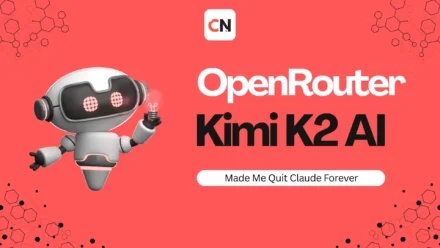
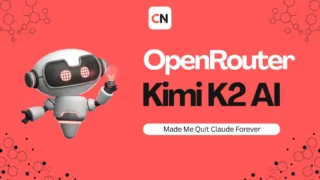
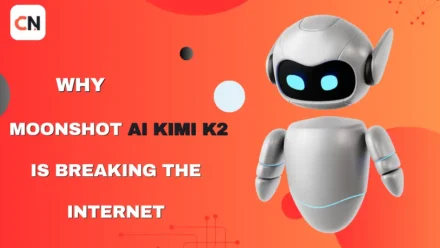

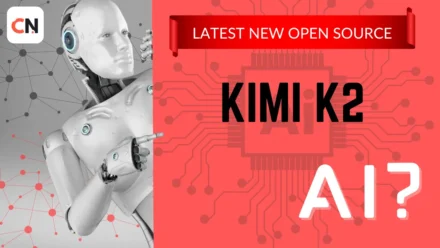
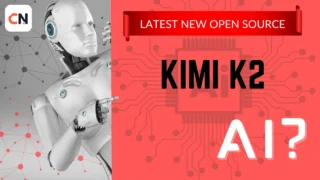
Leave a Comment